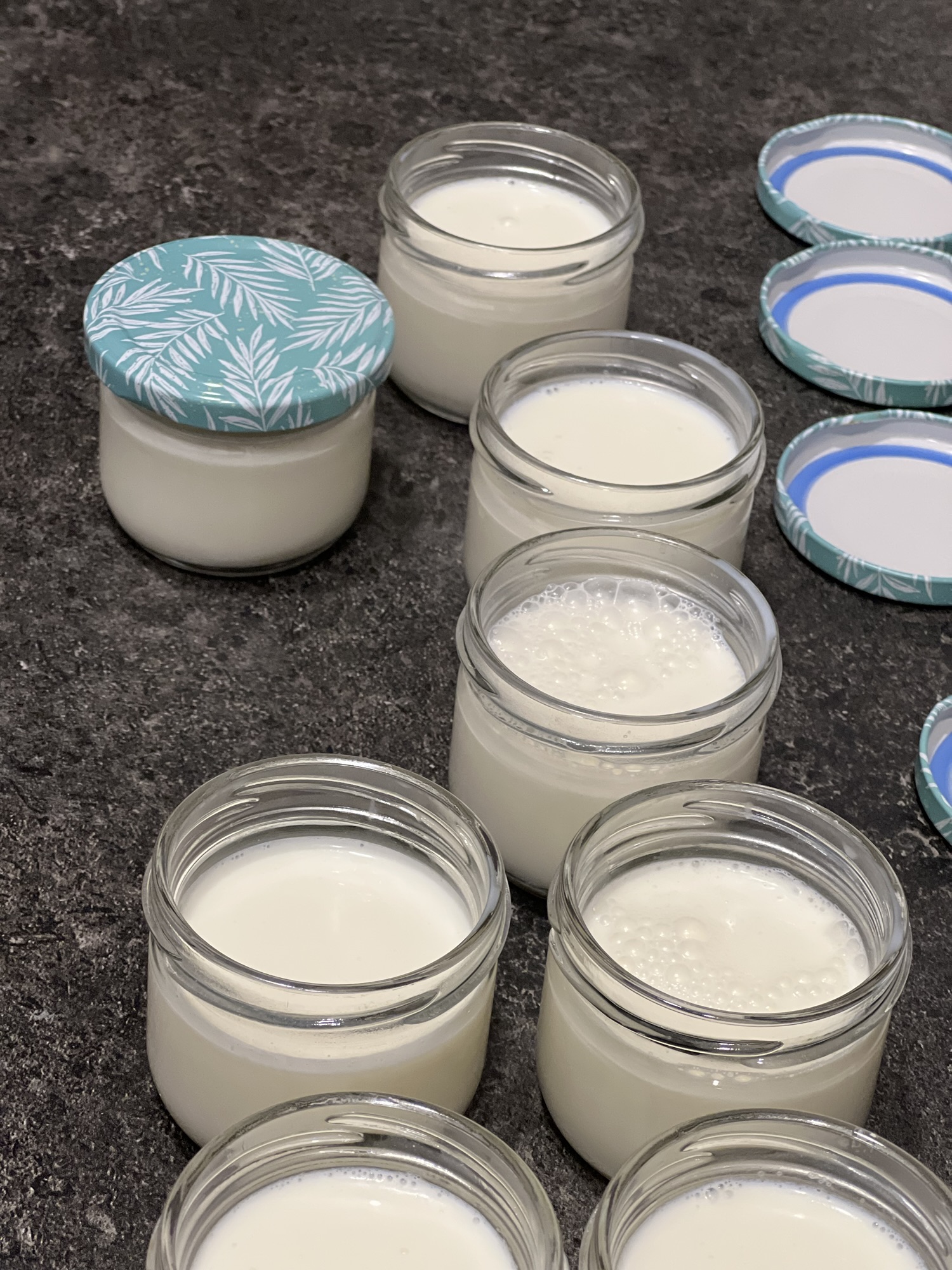Have you ever thought about making yogurt at home? It’s easy, fun, and tastes amazing! With just a few ingredients and a little time, you can create your own homemade yogurt—free from additives and exactly to your taste. Here’s how to do it.
Ingredients:
- 1 liter of whole milk (at least 3.5% fat; for a creamier 3.9% version, you can add a bit of cream)
- Optional: 100–150 ml of cream (for an especially creamy texture)
- 2–3 tablespoons of natural yogurt (make sure it contains “live cultures”, ideally with 3.8% fat)
Equipment:
- A saucepan
- A whisk
- A thermometer (helpful but not strictly necessary)
- Clean jars or a yogurt maker
- A towel or blanket
Instructions:
1. Heat the milk and cream
Pour the milk and cream into a saucepan and slowly heat the mixture to about 90°C (194°F). This step is important as it eliminates unwanted bacteria and ensures a firm yogurt consistency. Stir occasionally to prevent burning.
2. Let the mixture cool
Allow the milk and cream mixture to cool down to around 40-45°C (104-113°F). This is the ideal temperature for yogurt cultures to thrive. No thermometer? Test the temperature with your finger—it should feel pleasantly warm but not hot.
3. Add the yogurt starter
In a small bowl, mix the natural yogurt with a little of the cooled milk mixture. This helps evenly distribute the cultures. Then, add this mixture to the rest of the milk and gently stir until fully combined.
4. Fill the jars
Pour the mixture into clean jars or into a yogurt maker. If you don’t have special equipment, cover the jars with a clean towel and place them in a warm spot. The mixture should rest for 6 to 12 hours. The longer it sits, the firmer and tangier the yogurt will be.
5. Chill and enjoy
Once the yogurt has set, place it in the fridge to cool and improve its consistency. Then, enjoy it plain, with fruit, honey, or nuts!

How to Choose Yogurt with Live Cultures
To ensure a successful homemade yogurt, it’s important to use a natural yogurt with live cultures. But how can you recognize one? Here are some tips:
- Check the label: Look for terms like “live cultures,” “probiotic cultures,” or specific bacterial strains such as Lactobacillus bulgaricus and Streptococcus thermophilus.
- Avoid heat-treated yogurt: If the package says the yogurt has been “heat-treated” or “pasteurized,” the cultures are no longer active, making it unsuitable for homemade yogurt.
- Simple ingredient list: The only ingredients should be milk and yogurt cultures. If stabilizers, sugars, or flavorings are listed, it may not work well.
- Choose plain natural yogurt: Flavored yogurts often lack active cultures, so it’s best to go with plain varieties.
With these tips, you’ll find the perfect starter for your homemade yogurt!
Extra Tips:
- Maintain a stable temperature: A consistent temperature is key. You can wrap the jars in a blanket or place them in the oven (at the lowest setting or with the light on) to keep them warm.
- Experimenting is fun! Try different types of milk or add ingredients like vanilla to find your perfect yogurt.
Not too difficult, right? The best part is knowing exactly what’s in your yogurt and customizing it to your taste. Have fun trying it out, and let us know how your first homemade yogurt turned out! 😊
